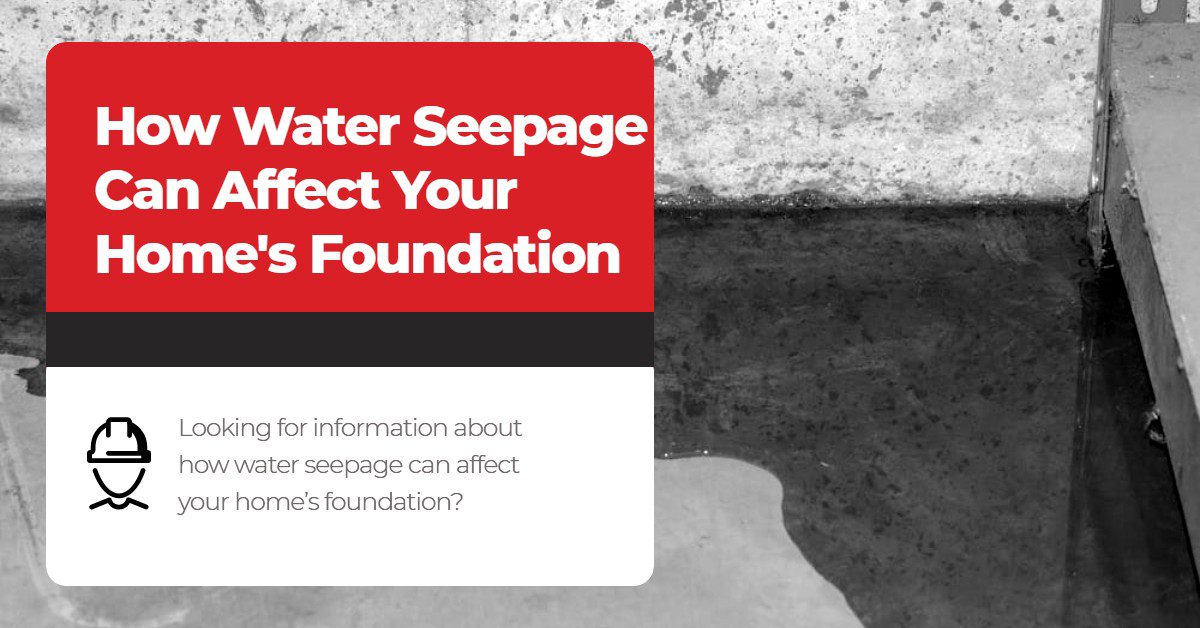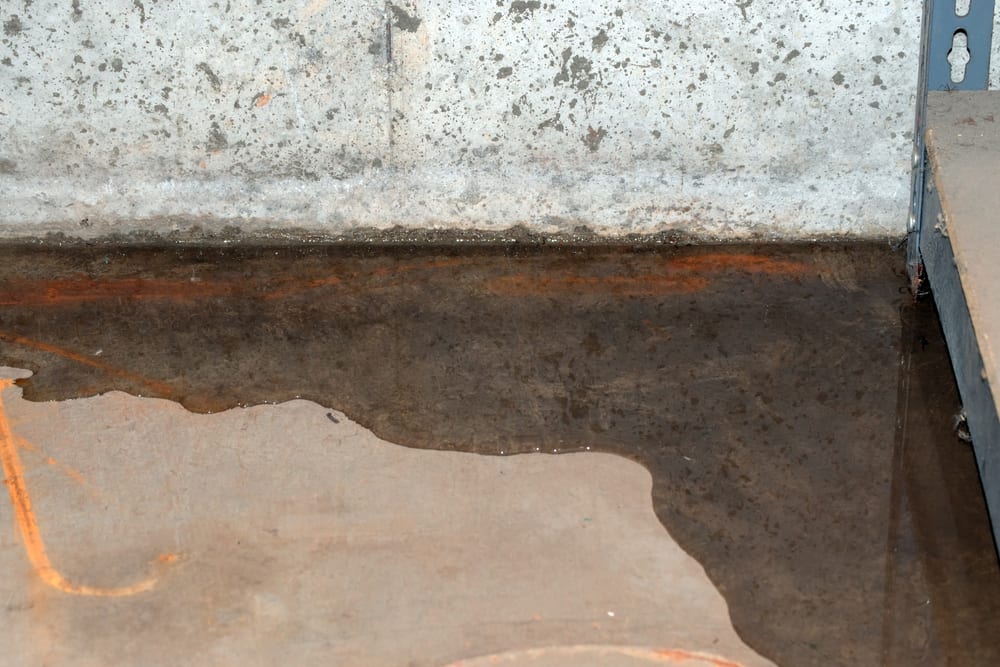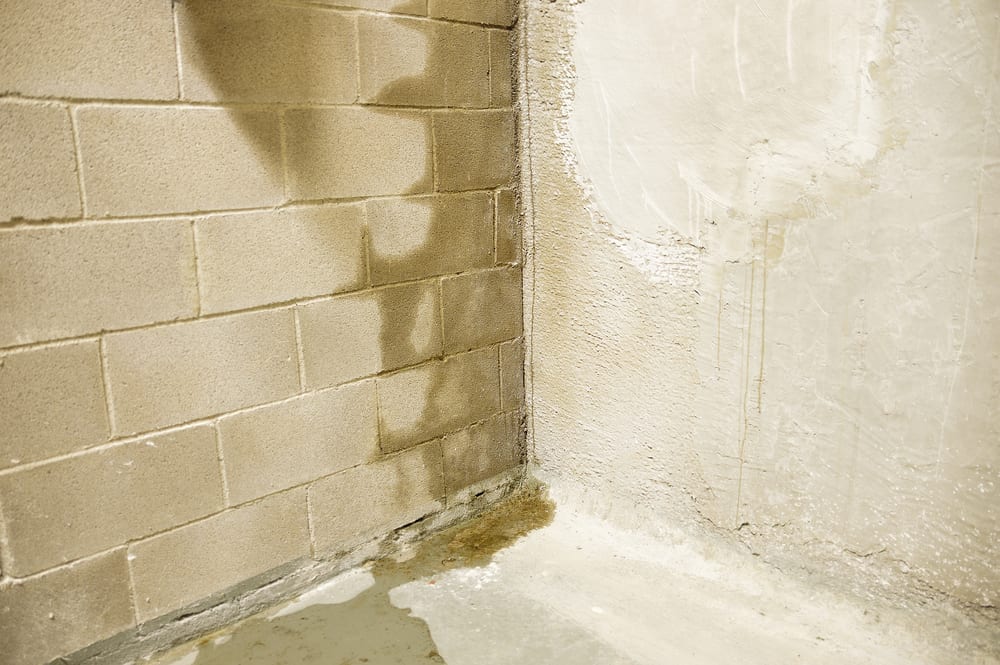Looking for information about how water seepage can affect your home’s foundation? If so, you’ve landed on the right page. By the time you’re done reading this short article you’ll know the causes of water seepage, how water seepage can affect a foundation, how to fix and prevent water seepage, and more.
Most Foundation Problems Are Caused By Water
Your home’s foundation is, without a doubt, it’s most important feature. Your home’s structural integrity rests on it, literally.
People are often surprised to hear that most foundation problems are caused by too much water in the soil under and around the foundation. The water-saturated soil causes the foundation to move, and this movement damages the foundation.
The cause of this excess water is poor drainage around the foundation. This can be caused by a variety of things including clogged gutters that allow rainwater to spill over the side of the house in sheets, downspouts that don’t direct water away from the foundation, broken water or sewer lines, improper grading, or some other problem that allows a large amount of water to pool near the foundation and saturate the soil. For example, floods, tropical storms, and hurricanes.
If the cause of the excess water isn’t found and eliminated, you will eventually end up with structural damage. Since serious structural damage is expensive to repair, your best bet is to prevent it from happening in the first place. You can do that by keeping excess water away from your foundation.
What Is Water Seepage?
Water seepage is when water doesn’t pour into a home’s foundation, but rather slowly makes its way in via penetrating or permeating a porous material like a concrete foundation wall. While concrete may look impenetrable, it isn’t. It’s actually porous. Of course, concrete can crack as well.
How It Can Affect Your Home’s Foundation
Water seepage is commonly associated with basements. When the soil around the home’s foundation gets saturated with water that isn’t able to drain away, it creates a phenomenon known as hydrostatic pressure. This pressure pushes on the foundation and causes existing cracks to get bigger. It can also cause new cracks to appear in the foundation. These cracks then cause water seepage. Also, when a structure is built on a hill or slope, uphill rainwater will be become ground water and groundwater can permeate the soil and actually travel through the soils and below your structure causing soil migration, consolidation and shift. A house or structure experiences this type of erosion can quickly cause a major structural problem.
If the pressure against the foundation walls goes on for long enough, it can even cause the foundation walls to bow or rotate. When this happens, you have serious structural damage.
Water seepage in the form of ice can also cause damage to a foundation. If you live in an area with a cold season, water will get into cracks and then turn to ice as the temperature dips below 32F. Because water expands when it freezes by around 9%, this will enlarge any existing cracks.
Water Seepage And Foundation Damage
Very minor foundation damage associated with water seepage doesn’t necessarily affect your home’s structural integrity. For example, minor water seepage into your basement via a tiny crack in the foundation, probably doesn’t require a major foundation repair. Instead, you can fix the problem by reducing the amount of water in the soil around the foundation, correcting any problems with gutters or downspouts, installing a sump pump, etc. In other words, you can correct the problem by making sure the soil around the foundation dries out, and all future moisture is directed away from the foundation.
Unfortunately, when the hydrostatic pressure isn’t relieved, and is allowed to continue pressing against the foundation, it will eventually cause serious structural damage. Walls might start to bow inward, or even rotate. This kind of water-associated foundation damage does affect the building’s structural integrity and will need to be repaired immediately after the source of the excess water has been removed. Two common solutions for re-stabilizing foundations are push piers and helical piers.
Signs Of Water Seepage
Water seepage into your home’s foundation is usually fairly easy to spot. Be on the lookout for things that indicate moisture:
- A musty smell
- High humidity level
- Mold on the walls
- Paint that’s peeling or bubbling
- Wall stains
- Rust on items stored in the basement
- Water on the basement floor
Causes Of Water Seepage
The causes of water seepage into or below your foundation are many, including, but not limited to,
- Moving groundwater
- Heavy rainfall or melting snow
- A high water table
- A broken water or sewer pipe
- Clogged gutters causing water to overflow and run down the side of the building in sheets
- A downspout that’s dumping water near the foundation instead of channeling it away from the home
- An improperly graded yard that allows water to run toward the foundation instead of away from it
- Shrubs, trees, or other vegetation that are both next to the foundation and require a lot of watering
- A problem with window wells. Window wells work to keep water from getting into your basement. If they’re not working properly, water will get in around the basement windows and, eventually, into your basement.
- Cracks in a foundation wall or basement floor caused, or made worse, by hydrostatic pressure
- A sump pump that isn’t working correctly
- A problem with a cove joint. (This is where the wall meets the floor.)
The root cause of water seepage into your home’s foundation is always going to be excess moisture in the soil around the foundation. If you merely repair, for example, a wall crack or a problem cove joint, but don’t correct root problem, you will eventually get another leak. You need to solve the drainage problem as well. If you don’t, you could eventually find yourself facing a major foundation repair costing thousands of dollars.
How To Fix And Prevent Water Seepage From Affecting Your Home’s Foundation
There are a variety of ways to repair a small crack in a basement wall. That will stop water seepage for a period of time. However, unless you take care of the root problem – excess moisture in the soil – the water seepage will eventually return. In other words, just repairing the crack is not a permanent solution.
You can fix water seepage into your home’s foundation by making sure there’s good drainage around the foundation, and that water doesn’t have an opportunity to pool near it. Some of the ways you can do this include…
- Making sure your yard is properly graded. The ground surrounding your foundation should drop 2-3 inches every 10 feet.
- Making sure gutters are free from debris. Clogged gutters can cause water to spill over the side of your house in sheets and down into the soil around the foundation.
- Making sure your downspouts don’t deposit water next to the foundation. Install one or more downspout extensions to make sure water flows away from the foundation.
- Installing some type of water-channeling system. For example, a French drain, a rain garden, or a swale to divert groundwater or surface water.
- Installing a sump pump. A sump pump collects the water that accumulates in the soil around your foundation, and then discharges it away from the foundation. After it’s installed, test it periodically to make sure it’s in working order.
- Performing periodic inspections. Look for signs of mold, excess moisture, pooled water near the foundation, moisture on basement walls or floor, peeling or bubbling paint, wall stains, rust on anything stored in the basement, and, of course, a musty smell. If you spot anything, contact a foundation repair professional immediately.
Remember, the idea is to make sure water drains away from your home’s foundation. For more information see Are You Making These Foundation Drainage Mistakes and French Drains.
Structural damage to your home can cost thousands of dollars to fix. Fortunately, water-related foundation problems are relatively easy to prevent. You just need to make sure there’s good drainage around your home’s foundation. You can do this by implementing one or more of the solutions we outlined above. While some of the solutions aren’t free, Benjamin Franklin was right when he said that “an ounce of prevention is worth a pound of cure”.
If you’ve noticed water seepage in your home’s foundation or soil erosion below the concrete foundation, contact us today for a free estimate.



